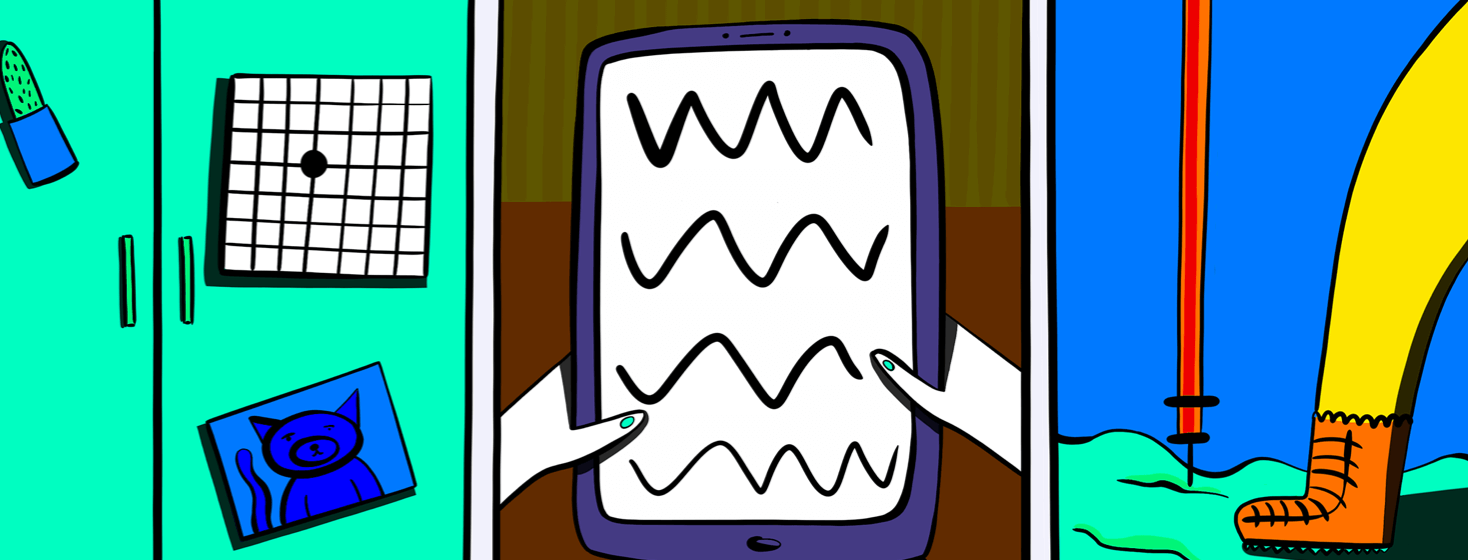A Day in My Life With Dry Macular Degeneration
I was diagnosed with early-stage dry age-related macular degeneration (AMD) six years ago by my optometrist. The first two or three years I continued with life as usual and saw my optometrist yearly for checkups.
By year four, I noticed a worsening in my vision. A visit to my optometrist confirmed a decline in vision. I was scheduled for a consultation with a retinal specialist. An optical coherence tomography (OCT) scan revealed I was now in the intermediate stage in the right eye. I was diagnosed with chronic dry eye which caused additional blurring. To help others understand what life is like with AMD, I decided to write about a typical day in my life.
Beginning my day
As I prepare breakfast, the first thing that comes into view is the Amsler grid hanging on the refrigerator door. Most days I take a moment to check for changes in both eyes. I am relieved when only the familiar dark shadow appears in my right eye. I know to call my retinal specialist right away should I notice any change.
Laying out our morning medications and supplements requires the use of a magnifying glass if any are new. It’s impossible to read the tiny labels otherwise. I especially like the lighted adjustable magnifier app on my iPhone. I keep the routine medications lined up in order in the cabinet so I know where to find them.
I often work after breakfast writing articles or moderating for the macular degeneration community. This would no longer be possible without the iPad I use for reading and writing. It has accessibility features that allow me to change the text size and improve contrast.
Hobbies
I have always loved to sew and crochet. I use led strip lights on my sewing machine and an adjustable lamp. Even with the special lighting, sewing is a challenge, especially on dark fabrics. I had to give up crochet when no amount of lighting allowed me to see the tiny stitches.
I love to read all kinds of books. I am fortunate to get free ebooks through my local library. I can change to giant font. Changing the background to black with white letters makes reading much easier.
Outings
I drive only in the daytime on the advice of my optometrist. The use of polarized sunglasses that fit over my prescription lenses help reduce glare and provide clarity.
A trip to the grocery store often results in me asking a shopper for assistance. I can’t read expiration dates or nutritional information on labels. If no one is around, I use the magnifier app on my phone.
My lack of depth perception has caused more than a few falls outdoors. I am especially careful in parking lots and sidewalks. Uneven pavement is hazardous with vision impairments.
When I walk for pleasure, I use trekking poles. They have saved me from a few falls. They give me the confidence I need to stay active. I don’t want to allow fear of falling to stop me from living an active life.
Blessed
I am blessed that I can still live a full life with the help of adaptive devices.
Editor's Note: As of August 2023, 2 drugs known as complement inhibitors — Syfovre® and Izervay™ — have been approved by the US Food and Drug Administration (FDA) to treat the advanced stage of dry age-related macular degeneration, or geographic atrophy (GA).

Join the conversation